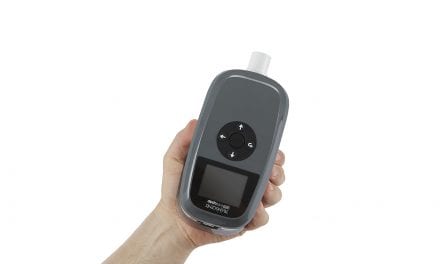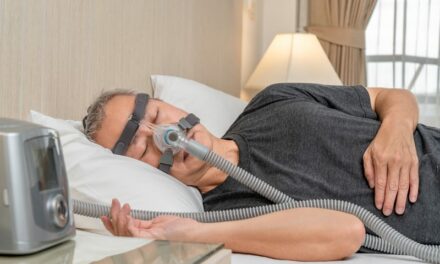Behavioral interventions offer safe, effective, and acceptable solutions for biobehavioral problems such as pediatric parasomnias

AROUSAL PARASOMNIAS
Sleepwalking (somnambulism) and sleep terrors (pavor nocturnus) constitute non-rapid eye movement (N-REM) parasomnias and are considered partial arousal disorders sleep because their underlying process reflects incomplete arousal from sleep.1 Sleepwalking consists of a series of complex behaviors initiated from slow-wave sleep that result in walking during sleep. Sleep terrors are characterized by a sudden arousal from slow-wave sleep with a piercing scream or cry, accompanied by autonomic and behavioral manifestations of intense fear. Primary considerations in the differential diagnosis of partial arousal disorders include nightmares, sleep-related epileptic seizures, and REM behavior disorder.
Sleepwalking and sleep terrors, while topographically different, fall within the spectrum of partial arousal disorders because they share a number of clinical characteristics including age of onset, timing within the sleep cycle, behavioral manifestation, genetics, and pathophysiology.3 Partial arousal parasomnias appear to occur during the transition from deep to lighter stages of sleep. Delta sleep appears to play an important role, as sleepwalking and sleep terrors occur most frequently in young children when N-REM sleep is most prominent. Factors that increase pressure toward deep sleep, such as staying up late, giving up a nap, or waking early, tend to increase their frequency. The events are usually outgrown with puberty when slow-wave sleep declines.
With few exceptions, most recommendations in the literature have focused on reassuring parents or providing for the child’s safety, rather than treating the disorder itself. Otherwise, parents are simply told to wait until their child outgrows the parasomnia. Fortunately, there are a number of behavioral strategies that can be used to directly intervene.
Parents are often relieved once the apparently bizarre behaviors are demystified and explained as a state of being stuck between sleep and wakefulness. Professionals can help parents differentiate between sleep terrors and nightmares, and reassure them the events are not a sign of psychopathology.4 Because injuries can and do occur, safety precautions are indicated. Items can be removed from stairways, the child can be moved to the bottom bunk, and doors and windows leading out of the house can be secured. Inexpensive, motion-activated alarms can be used to alert parents when the child leaves the bedroom. Parents should be informed that physically restraining a child during an event may only evoke increased agitation and prolong the event, therefore they should just gently guide the child back to bed.
Partial arousal parasomnias occur more frequently in the presence of increased sleep pressure. For example, medical sleep disorders (obstructive sleep apnea) can produce parasomnia activity due to sleep fragmentation. Children with behavioral sleep disorders such as bedtime resistance, sleep onset delay, and night wakings also display an increased rate of partial arousals.5 Surprisingly, while many sleep experts have commented on the role of overtiredness in partial arousal parasomnias, no studies have isolated increased sleep time as a primary intervention.
Increasing sleep may be as simple as expanding the child’s time in bed. Parents can gradually move the child’s bedtime earlier, add a short daily nap, or delay the child’s access to early morning activities to encourage later sleep. For children with behavioral sleep disorders, adding time in bed can be challenging. Parents may require assistance in developing a regular sleep-wake schedule, improving sleep hygiene (removing the television from the bedroom), improving sleep initiation skills, or reducing night-waking.6 Because bedtime is a high risk situation for disruptive behavior, many parents welcome suggestions for managing oppositional bedtime behavior such as repeated curtain calls (requests for games, stories, drinks) that delay sleep onset and reduce sleep time.
Psychophysiological arousal, such as anger or anxiety, may play a role in partial arousal parasomnias.7 Consequently, parents should maintain a calm, relaxing bedtime routine, and refrain from using early bedtime as a consequence for misbehavior. They should avoid discussing bizarre parasomnia behavior in the child’s presence and discourage sibling teasing, which may only heighten the child’s anxiety at bedtime and further compromise sleep. Children occasionally present behavioral or emotional issues that require targeted interventions to reduce arousal, as in the case of extreme nighttime fears.8 If significant psychopathology is suspected, further evaluation or referral is indicated.
Endogenous and exogenous stimuli that disrupt sleep may trigger a partial arousal event, given proper timing. Sleepwalking can be induced by standing children on their feet during slow-wave sleep,3 while sleep terrors can be triggered through auditory stimulation during slow-wave sleep.9 Therefore, comprehensive treatment requires reducing stimuli with the potential to trigger an event. This may include adding white noise to mask intermittent environmental noise or keeping others (including pets) from the bedroom. Reducing endogenous triggers may range from using medication to prevent a distended bladder to treating medical conditions that disrupt sleep continuity (sleep apnea, reflux, bruxism, periodic limb movements, tics). Behaviorally based awakenings, during which the child learns to call out or leave the bed, may also trigger partial arousal parasomnias.10
Scheduled awakenings involve the parent waking the child prior to an expected partial arousal event. This treatment gained popularity after the publication of uncontrolled reports.11,12 More recently, two controlled studies used scheduled awakenings to successfully treat partial arousal parasomnias.13,14 In one of these studies, however, the scheduled awakening intervention was confounded with an unexplained increase in total sleep time for all subjects.13
The scheduled awakening protocol typically requires parents to collect baseline data to determine the timing of events. Once a pattern is observed, the parent begins to awaken the child from sleep approximately 15-30 minutes prior to an expected event. Once the child’s eyes open, he or she is allowed to return to sleep. Treatment effects have been maintained even after the awakenings are discontinued, although the exact reason is unknown. One hypothesis is that scheduled awakenings condition self-arousal prior to the transition from deep stages into lighter stages of sleep.
Finally, pharmacological intervention may deserve consideration if consistent application of behavioral interventions yields insufficient results, or if the events pose danger to the child or family. Additionally, while polysomnography is not routinely indicated in uncomplicated, noninjurious parasomnias, it should be reconsidered for cases that fail to respond to standard therapies.
PARASOMNIAS ASSOCIATED WITH REM SLEEP
Nightmares are frightening dreams that awaken the child from sleep. Upon awakening, children may display manifestations of intense fear, yet they are typically alert with little confusion or disorientation. Frequent nightmares in children do not necessarily suggest underlying psychopathology, but they may serve as a barometer of the child’s overall level of adjustment. Stressful periods and traumatic events typically increase the frequency and severity of nightmares. Although stress may derive from family disruptions like death or divorce, even normal developmental transitions such as toilet training or starting school may precipitate nightmares.15 Other common precipitants include illness and certain medications. Protective factors include good overall health, family/social support, and effective child coping skills.16
Primary considerations in the differential diagnosis include sleep terrors, REM behavior disorder, and verbal report of nightmares following normal awakenings. The latter has received insufficient attention. Consideration must be made for children who verbally report nightmares after awakenings that occur as a function of the normal sleep cycle. This verbal report may serve as an admission ticket into the parents’ bed or secure parental presence next to the child during the return to sleep.
The approach for children who experience occasional nightmares usually involves nothing more than education and reassurance. Nightmares that occur frequently or contain extremely disturbing content (trauma, abuse) may warrant professional attention. Research has identified several strategies that can be useful in more severe cases.
Children and parents can be reassured that nightmares are an unavoidable part of growing up and do not necessarily signify emotional disturbance. Upon awakening from a nightmare, the child will be visibly shaken. Parents can hold and comfort their child while listening empathetically as the child recalls the frightening content. They may wish to emphasize to the child that the nightmare events did not actually occur. Older children can be taught to differentiate dreams from reality by helping them recognize strange aspects of the dream (dogs do not talk in real life).
Contingency management refers to a variety of procedures designed to identify and regulate the relationship among antecedents (prompts), behaviors, and consequences (reinforcers).
Outcome studies clearly demonstrate that nightmares are behaviors, and as behaviors they are responsive to the contingencies in the environment.16 Because social reinforcement can increase nightmare frequency, parents who go to great lengths to discuss or psychoanalyze each nightmare, or engage in drawn-out monster-proofing rituals, often see their efforts backfire in the form of more frequent and persistent nightmares. Parents can provide comfort and reassurance without inadvertently reinforcing the problem. Extensive discussions of fears and/or nightmares should occur during the day and not at night.
Sleep Hygiene
Sleep hygiene for children starts with ensuring a bedroom environment that is compatible with sleep. The room should be relatively quiet with dim light, the bed should be comfortable, and activities or interpersonal interactions minimized. A regular sleep schedule is key, along with a relaxing, positive bedtime routine. Caffeine should be limited and vigorous activity within 1 hour of bedtime avoided.
Efforts should be directed toward identifying and reducing environmental stimuli that may be overwhelming for the child. Nightmare precipitants can include any source of anxiety that exceeds a child’s coping skills. For example, exposure to frightening events and scary movies can be highly disturbing. Children are often surprisingly aware of ongoing family stressors, marital conflict, and parental substance abuse. Finally, special attention should be paid to identifying temporal associations between the onset of nightmares and salient events or lifestyle changes.
It is often impossible to eliminate all relevant sources of stress in a child’s life. Efforts, then, turn toward increasing children’s mastery of their environment and improving available coping skills. Exposure and desensitization strategies that target the manifestations of the nightmare content can effectively reduce nightmare frequency and intensity.17 Once the feared component of the nightmare is identified, a child can be taught to gradually confront it until mastery is attained.18 Guided imagery of dream content may be required for feared stimuli that are unavailable for direct exposure (monsters). A child could be taught relaxation skills prior to imagining the first part of a dream, and once the anxiety subsides, move on to the next segment of the dream until the entire dream can be rehearsed without anxiety.
Emerging evidence suggests that frightening nightmare content can be directly changed without necessarily targeting co-morbid psychological problems or environmental precipitants. Dream rescripting techniques are effective in reducing frequent nightmares with adults, and case studies suggest the method may work for children as well. The procedure requires the person to write down (or verbally describe) the content of the chronic nightmare, modify the content into a positive version, then rehearse the new version during waking hours.19,20 Children can learn to change the color, movement, or vocal tone to make a monster appear less frightening or even humorous. They may also develop a new nightmare storyline to allow them to conquer the enemy.
SLEEP-WAKE TRANSITION
Rhythmic movement disorder (RMD) comprises a group of stereotyped, repetitive movements involving large muscles, usually of the head and neck. The movements typically precede sleep onset as the child transitions from drowsiness into sleep. Many children will have recurrences of movements during the middle of the night following normal awakenings. Polysomnographic studies have identified continuation of the movements into light N-REM sleep, and rarely into slow-wave and REM sleep. Overall, children with RMD do not, as a rule, sleep worse than other children once they fall asleep.21 The topography of the rhythmic movements varies along a broad spectrum, including headbanging, headrolling, and bodyrocking.22
Rhythmic activity is common among infants, and the vast majority show onset prior to 1 year of age. The movements tend to decrease sharply with age and usually remit by 4 years. The etiology of RMD is unknown. Given the high prevalence in infancy, it most likely represents a normal tendency that develops into a learned, self-comforting pattern of behavior.7,22 RMD is best conceptualized as a stereotypic movement or habit disorder, as it represents a motor behavior that is repetitive, seemingly driven, and nonfunctional. Most children with RMD do not appear to experience pain or discomfort. The majority do not cry even with violent activity23 and often appear to find pleasure in the activity. Considerations for differential diagnosis include epilepsy, infantile spasms, spasmus nutans, benign neonatal myoclonus, periodic limb movements, and partial arousal parasomnias.24 Accurate diagnosis can be greatly aided by having parents videotape the nocturnal events or through split-screen video-polysomnographic analysis.25
In the majority of cases, RMD requires no intervention other than reassuring the parents that injury is unlikely and the child will likely outgrow the behavior.22 Direct intervention may be indicated, however, for those cases in which the violent movements pose risk of injury, or when the psychosocial consequences negate a wait and see approach.
To date, the treatment outcome studies on RMD are limited to anecdotal reports and uncontrolled case studies. Behavioral interventions for RMD have received the most empirical support. Effective treatment components have included contingency management, immediate detection through motion-sensing alarms, and teaching competing behaviors. Contingency management procedures have been used to reinforce the cessation of rhythmic nocturnal behavior.26,27 Because parental attention is often a salient reinforcer for young children, parents should be taught to use differential attention. Mild punishments have been used, such as waking the child upon the occurrence of rhythmic movement.28,29 Several studies attached a motion-activated, audible alarm to the bed.26,27,29 Finally, because rhythmic behavior becomes highly conditioned to the sleep onset process, it may be necessary to teach the child more acceptable replacement behaviors through the use of positive practice.30 For example, a child might be taught to sleep on his or her back, or to rock gently from side to side.26
Conclusion
Parents and physicians need no longer wait passively for children to outgrow their parasomnia, or resort immediately to medication. Behavioral interventions offer safe, effective, and acceptable solutions for biobehavioral problems such as pediatric parasomnias.
Brett R. Kuhn, PhD, is associate professor in pediatrics, Munroe-Meyer Institute for Genetics and Rehabilitation at the University of Nebraska Medical Center, Omaha.
References
1. Rosen GM, Ferber R, Mahowald MW. Evaluation of parasomnias in children. Child Adol Psychiatr Clin North Am. 1996;5:601-616.
2. Mahowald MW, Thorpy MJ. Nonarousal parasomnias in the child. In: Ferber R, Kryger M, eds. Principles and Practice of Sleep Medicine in the Child. Philadelphia: Saunders; 1995:115-123.
3. Broughton RJ. Sleep disorders: disorders of arousal? Science. 1968;159:1070-1078.
4. Kales JD, Kales A, Soldatos CR, Caldwell AB, Charney DS, Martin ED. Night terrors. Clinical characteristics and personality patterns. Arch Gen Psychiatr. 1980;37:1413-1417.
5. Mehlenbeck R, Spirito A, Owens J, Boergers J. The clinical presentation of childhood partial arousal parasomnias. Sleep Medicine. 2000;1:307-312.
6. Kuhn BR, Weidinger D. Interventions for infant and toddler sleep disturbance: A review. Child Fam Behav Ther. 2000;22:33-50.
7. Dahl RE. The pharmacologic treatment of sleep disorders. Psychiatr Clin North Am. 1992;15:161-178.
8. King N, Ollendick TH, Tonge BJ. Children’s nighttime fears. Clin Psychol Rev. 1997;17:431-443.
9. Fisher C, Kahn E, Edwards A, Davis DM, Fine J. A psychophysiological study of nightmares and night terrors. 3. Mental content and recall of stage 4 night terrors. J Nerv Ment Dis. 1974;158:174-188.
10. Ferber R. Childhood sleep disorders. Neurol Clin. 1996;14:493-511.
11. Lask B. Novel and non-toxic treatment for night terrors. BMJ. 1988;297:6648.
12. Tobin JD Jr. Treatment of somnambulism with anticipatory awakening. J Pediatr. 1993;122:426-427.
13. Durand VM, Mindell JA. Behavioral intervention for childhood sleep terrors. Behav Ther. 1999;30:705-715.
14. Frank NC, Spirito A, Stark L, Owens-Stively J. The use of scheduled awakenings to eliminate childhood sleepwalking. J Pediatr Psychol. 1997;22:345-353.
15. Blum NJ, Carey WB. Sleep problems among infants and young children. Pediatr Rev. 1996;17:87-92.
16. Halliday G. Treating nightmares in children. In: Schaefer CE, ed. Clinical Handbook of Sleep Disorders in Children. Northvale, NJ: Jason Aronson; 1995:149-176.
17. Halliday G. Direct psychological therapies for nightmares: a review. Clin Psychol Rev. 1987;7:501-523.
18. Cavior N, Deutsch AM. Systematic desensitization to reduce dream-induced anxiety. J Nerv Ment Dis. 1975;161:433-435.
19. Krakow B, Kellner R, Pathak D, Lambert L. Imagery rehearsal treatment for chronic nightmares. Behav Res Ther. 1995;33:837-843.
20. Palace EM, Johnston C. Treatment of recurrent nightmares by the dream reorganization approach. J Behav Ther Exp Psychiat. 1989;20:219-226.
21. Klackenberg G. Rhythmic movements in infancy and early childhood. Acta Paediatr Scand. 1971;224;S74-S83.
22. Leung AK, Robson WL. Head banging. J Singapore Paediatr Soc. 1990;32:14-17.
23. Kravitz H, Rosenthal V, Teplitz Z, Murphy JB, Lesser RE. A study of headbanging in infants and children. Dis Nerv System. 1960;21:203-208.
24. Thorpy MJ, Glovinsky PB. Parasomnias. Psychiatr Clin North Am. 1987;10:623-639.
25. Dyken ME, Lin Dyken DC, Yamada T. Diagnosing rhythmic movement disorder with video-polysomnography. Pediatr Neurol. 1997;16:37-41.
26. Balaschak BA, Mostofsky DI. Treatment of nocturnal headbanging by behavioral contractions. J Behav Ther Exp Psychiatr. 1980;11:117-120.
27. Strauss CC, Rubinoff A, Atkeson BM. Elimination of nocturnal headbanging in a normal seven-year-old girl using overcorrection plus rewards. J Behav Ther Exp Psychiatr. 1983;14:269-273.
28. Golding K. Nocturnal headbanging as a settling habit: the behavioural treatment of a 4-year-old boy. Clin Child Psychol Psychiatr. 1998;3:25-30.
29. Lindsay SJ, Salkovskis PM, Stoll K. Rhythmical body movement in sleep: a brief review and treatment study. Behav Res Ther. 1982;20:523-526.
30. Linscheid TR, Copeland AP, Jacobstein DM, Smith JL. Overcorrection treatment for nighttime self-injurious behavior in two normal children. J Pediatr Psychol. 1981;6:29-35.





